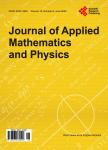Cheetah:A Library for Parallel Ultrasound Beamforming in Multi-Core Systems
猎豹:在多核心系统库的并行超声波波束赋形作者机构:ITEFISpanish National Research CouncilMadridSpain Department of ElectronicsUniversity of AlcaláAlcaláde HenaresSpain Department of Computer Architecture and AutomationComplutense University of MadridMadridSpain
出 版 物:《Journal of Applied Mathematics and Physics》 (应用数学与应用物理(英文))
年 卷 期:2015年第3卷第8期
页 面:1056-1061页
学科分类:1002[医学-临床医学] 100214[医学-肿瘤学] 10[医学]
基 金:supported by the Spanish Government and the University of Alcaláunder projects DPI2010-19376 and CCG2014/EXP-084 respectively
主 题:GPGPU Ultrasound Image Beamforming Array Transducer
摘 要:Developing new imaging methods needs to establish some proofs of concept before implementing them on real-time scenarios. Nowadays, the high computational power reached by multi-core CPUs and GPUs have driven the development of software-based beamformers. Taking this into account, a library for the fast generation of ultrasound images is presented. It is based on Synthetic Aperture Imaging Techniques (SAFT) and it is fast because of the use of parallel computing techniques. Any kind of transducers as well as SAFT techniques can be defined although it includes some pre-built SAFT methods like 2R-SAFT and TFM. Furthermore, 2D and 3D imaging (slice- based or full volume computation) is supported along with the ability to generate both rectangular and angular images. For interpolation, linear and polynomial schemes can be chosen. The versatility of the library is ensured by interfacing it to Matlab, Python and any programming language over different operating systems. On a standard PC equipped with a single NVIDIA Quadro 4000 (256 cores), the library is able to calculate 262,144 pixels in ≈105 ms using a linear transducer with 64 elements, and 2,097,152 voxels in ≈ 5 seconds using a matrix transducer with 121 elements when TFM is applied.



